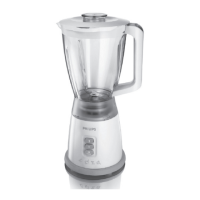OPERATIONS INSIDE THE ENGINE COMPARTMENT
PERIODIC INSPECTION AND MAINTENANCE
2-19
MASTER CYLINDER BLEEDING <VEHI-
CLES WITHOUT ABS>
The master cylinder used has no check valve, so if
bleeding is carried out by the following procedure,
bleeding of air from the brake pipeline will become
easier (When brake fluid is not contained in the mas
-
ter cylinder).
1. Fill the reservoir with brake fluid.
2. Keep the brake pedal depressed.
3. Have another person cover the master cylinder
outlet with a finger.
4. With the outlet still closed, release the brake
pedal.
5. Repeat steps 2 − 4 three or four times to fill the
inside of the master cylinder with brake fluid.
HBB SYSTEM AIR BLEEDING <VEHICLES
WITH ABS>
1. Air bleeding from front brake system
Turn the ignition switch to the LOCK (OFF) posi-
tion. Bleed air from the front brake calipers (right
and left) by pumping the brake pedal.
2. Air bleeding from rear brake system
CAUTION
• If too much brake fluid is drained at a time,
the accumulator pressure may be dropped
abnormally. So limit drain amount at a time to
100 cm3 or less, and check that the pump
motor stops per one air-bleeding.
• If the brake fluid level in the reservoir has
been dropped, air may enter the pump motor
accidentally. To avoid this, always maintain
the brake fluid between the MIN and MAX
marks.
While the ignition switch is turned ON and the
brake pedal is depressed, bleed air from the right
and left rear brake calipers.
A16. CHECK BATTERY ELECTROLYTE
LEVEL
M6020201700577
CAUTION
• If the battery fluid is below the LOWER
LEVEL, the battery could explode in using.
• If the battery fluid is over the UPPER LEVEL,
leakage could result.
1. Inspect whether or not the battery fluid is between
the UPPER LEVEL and LOWER LEVEL marks.
2. Use a hydrometer and thermometer to check the
specific gravity of the battery fluid.
Standard value: 1.220 − 1.290 (electrolyte
temperature 20
° C)
3. The specific gravity of the battery fluid varies with
the temperature, so use the following formula to
calculate the specific gravity for 20
° C. Use the
calculated value to determine whether or not the
specific gravity is satisfactory.
D20 = (t - 20) × 0.0007 + Dt
D20: Specific gravity converted to a value for
electrolyte temperature of 20
° C.
t: Electrolyte temperature at the time of meas-
urement
Dt: Actual specific gravity
AC608769
AB
AC504567
AB
Battery fluid
Thermometer
Hydrometer

